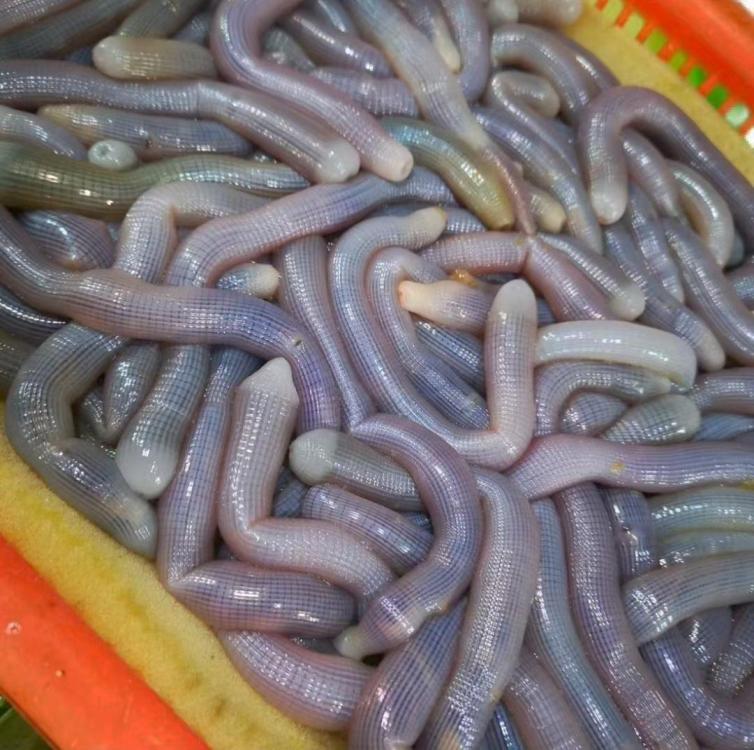北海 (běi hǎi, literally ‘north (of the) sea’) is a city on Guangxi’s southern coast on the Gulf of Tonkin near the border between China and Vietnam. It gets a large number of domestic tourists looking for its beaches and seafood ; few foreign. The city and especially 外沙岛 (wài shā dǎo), Waisha Island, connected to the city by a short bridge, gets the bulk of the visitors and is full of seafood restaurants. Most of my fish and seafood (and all seawater species) come from there.
One special attraction is S: 北海沙虫; T: 北海沙蟲 (běi hǎi shā chóng), Sipunculus nudus, Beihai sandworms. a local delicacy. They are also referred to in English as ‘peanut worms’.
These on average, 15 cm / six inch long, unsegmented worms are picked from Beihai’s beaches early in the morning when they emerge from the sand. Fried until crispy, they have a pleasant umami-laden flavour. They are often added to congee, which is how I have eaten them.
Today, they are being cultivated in limited but growing numbers. Away from their natural habitat of Guangxi, they are sold dried. I can buy them fresh. $9.00 USD per 250 grams.
Need I mention, they are also used in TCM? In that context they are sometimes called ‘sea cordyceps’ as they are claimed to have similar medicinal benefits to those parasitic fungus infested worms?




